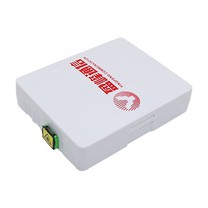
A fiber optic patch cord,is a cable assembly that consists of two fiber optic connectors at each end and a length of optical fiber between them. It is used to connect optical devices such as switches, routers, and transceivers in fiber optic networks.
The structure of a fiber optic patch cord typically includes the following components:
Fiber Optic Cable: The cable itself is made up of one or more strands of optical fiber, which are extremely thin strands of glass or plastic that carry the optical signals. The fiber is designed to transmit light signals over long distances with minimal loss.
Connector: At each end of the patch cord, there is a connector that allows the fiber optic cable to be connected to the devices or other patch panels. The connectors are typically made of ceramic, metal, or plastic and are designed to align and join the fibers precisely.
Ferrule: The connector contains a ferrule, which is a cylindrical structure that holds the fiber in place. The fiber is inserted into the ferrule, which provides alignment and support. The ferrule is usually made of ceramic or metal and has a small hole (bore) through which the fiber passes.
Connector Housing: The connector housing surrounds the ferrule and provides mechanical protection and stability. It is typically made of plastic or metal and helps to secure the connector and prevent damage to the fiber.
Cable Jacket: The entire patch cord is covered by a protective outer jacket, which provides protection against physical damage, moisture, and other environmental factors. The jacket is typically made of a durable material such as PVC (polyvinyl chloride) or LSZH (low smoke zero halogen).
It's worth noting that the specific structure and design of a fiber optic patch cord can vary depending on the type of connector (e.g., SC, LC, ST, etc.) and the application requirements. Different types of connectors may have different ferrule designs and housing styles, but the fundamental components mentioned above are common to most fiber optic patch cords.






